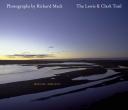We drove from Bariloche to San Martin of the Andes and spent 3 days in that area, once again driving on the dirt and gravel roads which were the main roads between places in this part of our journey. The mountains are not the jagged peaks you expect to see in
Patagonia, turns out they are mostly south of here about 500 miles and further in Parque Nacional Glaciers and Torre de Paines. That will be next year’s trip! We spent our first day driving down the lake here and found it very relaxing. We just happened upon a camping and beach area on the lake and spent a few hours wandering around the rocks and gravel beaches. While I made some photographs Dana was able to use his cell phone to do some business and talk to his wife. The coverage here is incredible!
We then hiked back to a waterfall and then on beyond to what we think is the border between Chile and Argentina. We walked a little further just to be able to say we climbed the Andes from Argentina to
Chile and back! The forest is more of a temperate rain forest, the floor covered with a cane which looks like bamboo.
The next day we drove up a different dirt road with the intent of crossing into Chile. But at the start of the Parque Nacional Lanin we were stopped at the guard house and after a few moments of them looking at all our documents were told we could not take the car across the border – not the right paper work. But they did let us into the park and we spent a great day ending up at a lava field which stretched for miles from the volcano down the mountainside and into a lake. Small trees, probably hundreds of years old sprouted up from the rocks in places. But the mountain itself was devoid of any vegetation we could see.
The drive back to Bariloche was also nice, although we were being chased by rain all day. We stopped at another waterfall which happened to be right by the road. Then drove on. We stopped for lunch at Lago Traful, as the dark clouds approached we shot some of the storm clouds and light reflecting on the water. We also shot our last shots on the river Trafol.
Our final full day in Argentina dawned clear, with the rain clouds which dumped rain on us al night clearing off and revealing snow in the mountains! We went up a chair lift to the top of the hillside, which locals like to tell you National Geographic says is one of the 7 best views in the world. Maybe. Dana walked up the hillside while I rode the chairlift with the camera bag. The clouds we beautiful on the snowy peaks. But the wind and cold we something I battled in keeping the camera steady! We drove a small circle around and back to the hotel and have spent a very relaxing last day.
Tomorrow we fly home returning sometime on Tuesday afternoon. Argentina has left me wanting to come back often! I guess that is the measure of a great trip. Never felling you have photographed it well enough and wanting to experience it even more.
Adios for now…
Richard (and Dana)
PS: I was not able to upload the normal web pages of more images from here this time. Look for an update later this week! Plus it is almost sunset so I need to get back out there!























